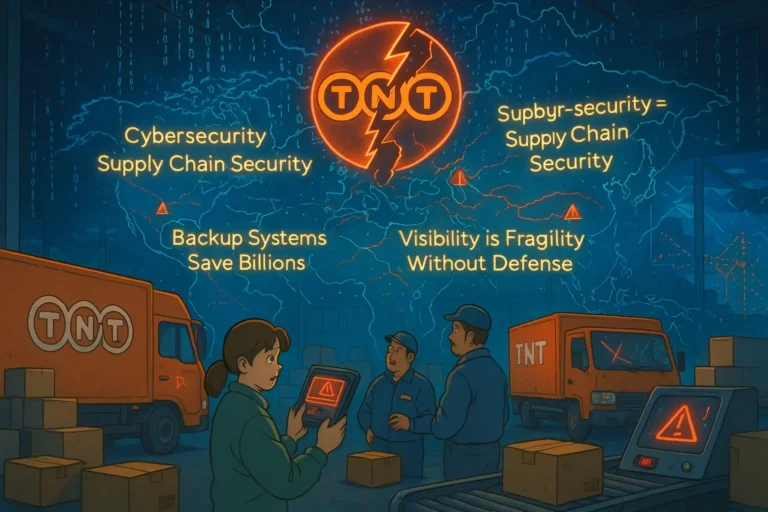
African supply chains are already implementing and using robotics, among other tech solutions, so it is possible. But there are challenges.
Over and over again, technology has proved itself to be the undisputed lifeline of modern supply chains, and one of its potent offshoots is robotics and automation.
Despite the ability of technology to drive efficiency in supply chains, in Africa, it has experienced resistance. There are a number of reasons, and we will explore them later on in this article.
However, for African supply chains to reach their potential, technology solutions must be embedded into their everyday operations.
This brings us to the question posed in this article. Is widespread use of robotics possible in the African supply chain? If it is, why isn’t there a widespread implementation?
These are the questions we will be answering throughout the article.
What are Robotics?
The science of robotics focuses on building and utilizing machines, or robots, as they are popularly known, that are able to carry out tasks either fully or partially on their own.
These devices, which are frequently made to resemble the motions of people or animals, are employed in many different industries to automate procedures, help with challenging jobs, and boost productivity.
In the supply chain context, these robots or machines help with operations such as production or warehousing. In these, you will typically find them in activities like sequencing, packaging, sorting, and order, among others.
When implemented properly, it can reduce inefficiencies and errors while improving the output of the supply chain.
Why is Robotics Beneficial to African Supply Chains?
There are quite a number of reasons why robotics can be beneficial to supply chains operating on the continent.
1. Robotics Improves Safety During Operations
Supply chain operations can be quite dangerous, especially when you consider the production, logistics, and storage aspects of it.
For the people involved, manufacturing or moving goods around can lead to all manner of physical problems.
Although safety gears do quite a bit, many times, robotics are capable of carrying out these activities with ease and in a manner that does not put anyone in harm’s way.
2. Improves Efficiency of Supply Chain Operations
There are many tasks in the supply chain that are boring and repetitive. These tasks are generally riddled with errors and inefficiencies and, in most cases, can slow down processes.
Some of these processes may include filling, order processing, bottling, washing, and others.
When robotics are deployed to carry out these processes or activities, it puts the people in that department in a supervisory role while the robots do the menial tasks.
These improve efficiency because of the “garbage in, garbage out” principle, and where there are little errors, these can be spotted by the supervisors. This helps promote efficiency.
3. Engenders Innovative Solutions
Although supply chain management was coined towards the end of the 20th century, its history goes back centuries. But have you ever wondered why it was mostly stagnate until the advent of technology?
There are two reasons for that-technology and competition. With technology, businesses have broken ground and developed innovative solutions that have helped improve supply chains.
Robotics and automation are the same. They are tools that spark the innovative juices of supply chain managers and their teams, especially with regard to meeting customer satisfaction.
4. It helps Create Jobs
When robotics are part of the supply chain fold, it creates new job roles and descriptions for the community, which can engender economic growth.
These jobs are typically specialized, which also helps your team develop expertise and technical know-how of the supply chain operations.
Why isn’t there a Wide Spread Adoption of Robotics in African Supply Chains?
The answer is that there are challenges businesses face in trying to adopt technology like robotics and automation into their supply chain practices.
1. Poor Infrastructure
Poor infrastructure is the bane of the African economy. Although there is a widespread boom in economic activities, these problems still limit what the continent can achieve.
There are quite a number of infrastructural deficiencies. The one that directly impacts robotics is the availability of energy.
Although there has been quite an improvement in recent years, countries like Nigeria, which is the largest economy on the continent, are still unable to provide sufficient energy for individual and business activities.
These parties try to generate energy for themselves, but it can get quite expensive to maintain, which turns off a lot of businesses from implementing robots and other solutions.
2. Poor Access to Finances
In the implementation and integration of technology solutions such as robotics or automation, there are quite a bit of financial resources involved.
The problem for many businesses on the continent is that they do not have access to these financial resources. Many times, when they apply for loans, there are quite a few obstacles, such as massive interest rates.
When working out the cost-benefit analysis in most cases, these rates might hobble the supply chain’s ability to perform in other areas. So, the businesses put it on hold.
On the part of the lending agencies, there are security and other risk concerns that the governments are yet to address. This impacts the interest rates, making it abnormally high.
3. Lack of Expertise
Although the tides are beginning to turn around, there is a general lack of expertise in operating supply chain technology.
It is not uncommon to see foreigners operating different projects and supply chain operations across the continent.
This lack of expertise makes it expensive for businesses to operate the tech solutions, especially if they have to hire foreigners, which will typically cost more.
The more tech solutions implemented, the more expertise needed and, ultimately, more financial resources needed. This is why many businesses shy away from it.
4. Regulations and Compliance
In the use of tech solutions, there are quite a bit of regulation and compliance measures that governments usually take to monitor it.
When these are not in place, it is challenging for businesses and supply chains to know what type of technology to implement and how to implement it.
When there is no certainty, supply chains tend to abandon the tech application altogether.
Is Robotics in African Supply Chains A Possibility?
Robotics will solve a lot of problems that plague the African supply chain, including inefficient order processing, late deliveries, and others.
It can help the supply chains produce faster, better, and deliver the right product on time. However, the question is, considering the challenges, how can this be?
The demand for infrastructure is not slowing down any time soon. More than 28 countries have doubled in population in the last 28 years, and more are yet to join the party for the next 30 years.
The government can only expect the demand to rise. Electricity, for one, will experience a 93% increase in demand by 2035, which is not very far away.
However, though the infrastructure aspect of it is still questionable, there is a lot of good news for other areas. For instance, a rise in education and expertise.
This means cheaper or more affordable labour for different supply chains across the continent.
These will help propel the industry to reduce interest rates and make more credit solutions accessible to businesses.
All in all, robotics is possible, and there is a whole list of robotics startups on the continent pointing to the readiness of the market for it.
What would the Successful Implementation of Robotics in African Supply Chains Entail?
Personally, I believe it is only a matter of time before robotics become a common feature in African supply chains. There are certain things that have to be in place though.
1. Proper Integration
There has to be full integration of robotics into the different aspects of the supply chain, including simple and complicated activities, for this to be a success.
Half-hearted implementations or hesitation will not bring about the full returns of the investment.
2. Understanding The Need
Before implementing robotics in any supply chain operation, it is important to understand the need at hand.
You want to solve a need, not just implement the solution because you believe it is necessary or will look cool.
3. Safety Measures
You need adequate safety measures in place so people do not collide with the robots. Some of these solutions include recognisable pathways for the robots.
There should also be a policy in place to ensure the robots are not overused or exposed to damaging situations.
4. Maintenance and Support
Ensure there is adequate maintenance and support system for the robots and machines. Practise the preventive maintenance approach rather than the corrective.
This way, the machines will last and serve the supply chain longer and more effectively.
FAQs on Robotics in the African Supply Chains?
Q1: Which African industries stand to gain the most from supply chain robotics?
Several industries actually, including manufacturing, logistics, mining, and agriculture.
Q2: Does robotics pose a threat to employment in African supply chains?
Automation can potentially eliminate certain labour-intensive jobs, but it can also open up new career options for people who maintain and run robot systems.
Q3: Are robots technologies affordable for African supply chains?
Although prices vary, some solutions—such as collaborative robots, offer smaller African firms affordable alternatives.
Q4: How can African companies access robotics technology and training?
It’s a joint effort between governments and businesses. Numerous governmental bodies and associations provide financial assistance and corporate training programs to encourage the use of robotics.

Obinabo Tochukwu Tabansi is a supply chain digital writer (Content writer & Ghostwriter) helping professionals and business owners across Africa learn from real-world supply chain wins and setbacks and apply proven strategies to their own operations. He also crafts social content for logistics and supply chain companies, turning their solutions and insights into engaging posts that drive visibility and trust.







